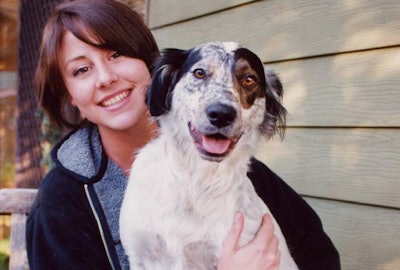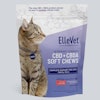
U.S. millennial and gen Z pet owners spend the most monthly on their pets, according to several surveys and sources. What they buy, how they shop, and who and what influences their purchasing decisions will likely affect the pet food and pet care markets for at least the near future.
A new survey of 784 U.S. pet owners conducted by Bigeye, an advertising agency based in Orlando, Florida, USA, showed that those aged 25-34 were more than twice as likely as owners aged 45-55 to spend more than US$200 per month on their pets. Meanwhile, the 2019 annual spending report from the American Pet Products Association (APPA), released in March 2019, indicated average monthly pet care spending of US$142 for millennials, with Gen Z spending US$124 and Gen X, US$105. All are more than the US$80 spent per month by baby boomer owners (data cited by Cascadia Capital in its Fall 2019 Pet Industry Overview report). APPA probably captured the spending of more than 784 U.S. pet owners, but it’s hard to say because the association doesn’t divulge its methodology.
Other sources, such as the U.S. Bureau of Labor Services, show pet food spending by owners under 25 years old increased by a robust 80% in 2018, perhaps contributing to the higher monthly spending amounts shown by the other sources.
Subscriptions, pet health insurance – but vet care, not so much?
Further data and insights shared in these reports take us a level or two down to some of the purchase behaviors and drivers for these younger pet owners. For example, the Bigeye survey showed that, while about a third (34%) of all respondents use some type of pet product subscription service – with 63% of those buying pet food through the services – among younger owners, the share rises to 40%. “Owners aged 25-34, living in a townhome or a condo and in an urban area are more likely to subscribe than other groups,” the report said. “These findings held true across all four regions of the U.S.”
The same percentage of pet owners aged 25-34, 40%, purchase pet health insurance, according to the Bigeye survey, yet owners under 35 years old tend to purchase veterinary care less.
I have heard that anecdotally from other sources; and in fact, I recently had an interesting conversation with an expert pet market analyst about how and why younger pet owners care for their pets. Without reaching any definitive conclusions, we both postulated that, with millennials and Gen Z-ers being digital natives, purchasing behaviors like using online subscriptions made a lot of sense.
Changing pet care influences and sources
Another theory we discussed, specific to the lower spending on veterinary care, is that younger consumers are more independent, even do-it-yourselfers, and less reliant on traditional “authority figures” and similar experts.
The Cascadia report seemed to support this: “As a direct result of changing demographics and proliferation in product availability, traditional authorities have seen their trust position erode,” it said. “Veterinarians, the legacy authority, are no longer the center of the pet owner’s universe, having experienced usage decline in younger demographics and waning influence on product selection due to the rise of the internet and ties to large brand platforms.”
Further, the report compared an “old paradigm” to a new one in terms of influences on pet owner decision-making. In the old paradigm, consumers trusted not only veterinarians but also major brands backed by vets, as well as large pet specialty retailers. Now, they are just as likely, if not more so, to turn to peers, breeders, e-commerce retailers and all brands – major, “challenger” and direct-to-consumer ones – even if not recommended by vets.
Bigeye’s report included data on sources of pet food recommendations, though not broken down by age group. While 49% of respondents still turn to their veterinarians, 38% seek out friends and family, 33% rely on pet food reviews and 23% on internet research. (Respondents apparently were prompted to select all sources used.) Something tells me that just five or 10 years ago, the percentage of pet owners seeking pet food recommendations from their veterinarians was higher, perhaps significantly so.
Mass market channel continues to rise for pet food
Regardless of age group, more pet owners are shopping for pet food in the food, drug and mass (FDM) channel, meaning grocery, discount stores and similar outlets. Citing data from Nielsen, the Cascadia report said sales for dog consumables (dog food and treats) in the U.S. FDM channel reached US$10.1 billion as of the 52-week period ending June 30, 2019. That represented 5.3% year-over-year growth, about double the sales increase in the channel from 2017-2018.
According to Bigeye’s survey, 48% of responding pet owners reported purchasing pet food from grocery or department stores – compared to 31% for pet retailers and 17% for online.


















